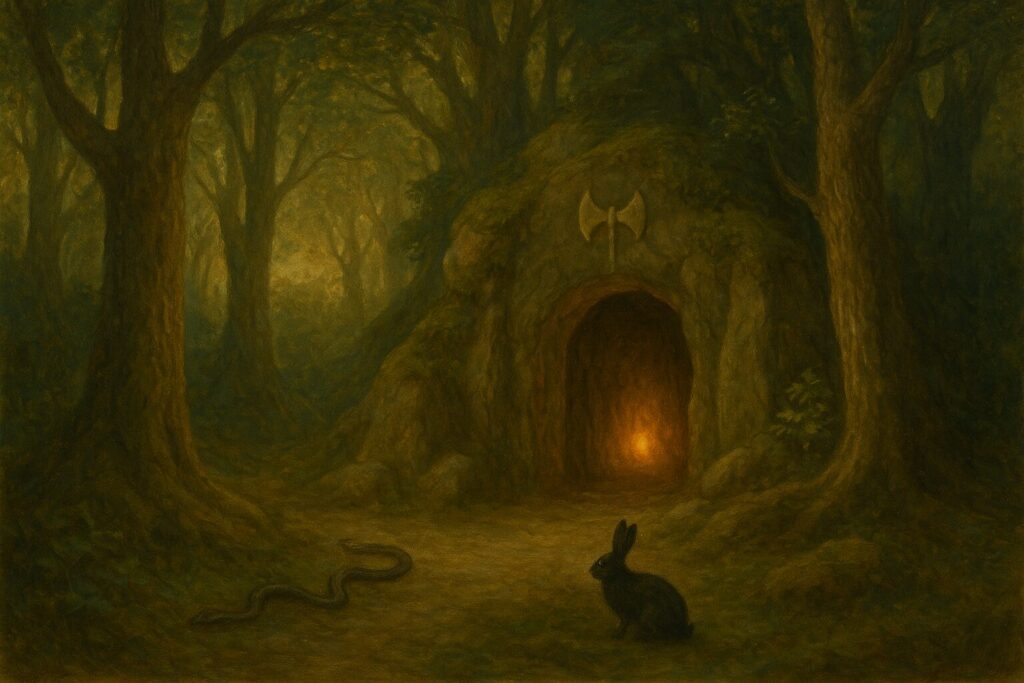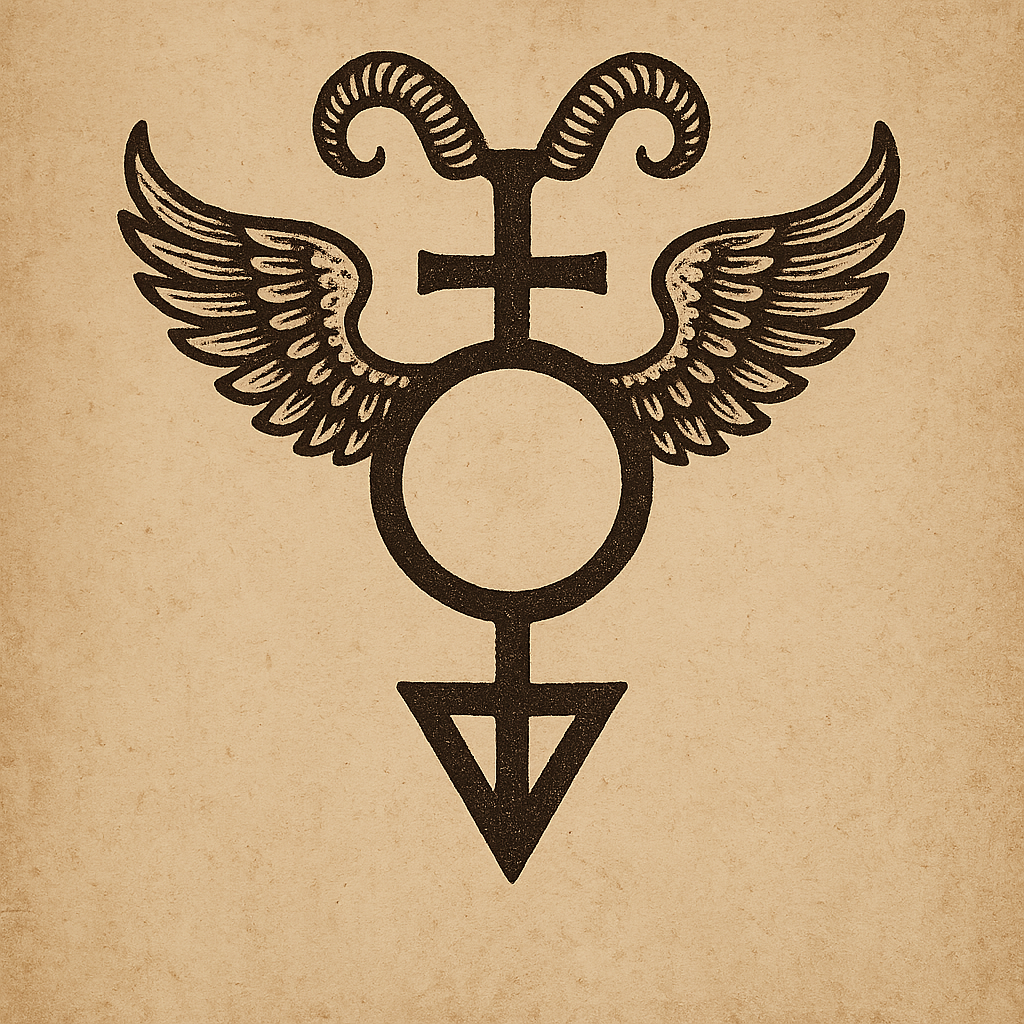Mysticism: The Hidden Current of Union

Mysticism is the oldest and most universal current of the magical and spiritual arts—the living thread that runs through every tradition that seeks not merely to believe in* the divine but to touch it. Long before churches or lodges, before covens or grimoires, there were the Mystery cults: secret brotherhoods and sisterhoods in which the initiate was led through darkness into revelation, dying symbolically to the world to be reborn in the light of the gods.
In ancient Egypt, in the Mysteries of Isis and Osiris, the soul was guided through ritual death and resurrection. In Greece, at Eleusis, initiates descended into the sacred night of Persephone to behold the vision of life renewed. In the Orphic rites, the human spirit sought liberation from the wheel of incarnation; in the Mithraic temples, the soldier of light climbed the ladder of stars. These were not religions of doctrine but of experience—personal encounters with the divine through secrecy, purification, and revelation. From them came the Greek word mystikos, “hidden,” the root of our term mysticism.
The Mystery traditions shaped the entire Western spiritual imagination. They taught that truth is not transmitted through authority but awakened through encounter. When late-antique philosophers and early Christians began to speak of mystical union with God, they were drawing upon the same initiatory logic: the soul, purified through ordeal, ascending to direct knowledge of the One. The line of descent is continuous—from Isis and Demeter to Plotinus and the Neoplatonists, from them to the Christian contemplatives who described their visions in the language of scripture.
By the Middle Ages, mysticism had become a recognized path within Christianity, though always a precarious one. Meister Eckhart, Julian of Norwich, Teresa of Ávila, and John of the Cross wrote of annihilation of the self in divine love, echoing the ancient mystery of death and rebirth. They called it the dark night of the soul—the initiatory descent before illumination. Some were canonized as saints; others were censured as heretics. The same fire that sanctified could also burn, depending on who held power. Here again we see the dynamic familiar to witches: revelation exalted in the cloister, condemned in the field.
Mysticism’s essence is direct experience—union unmediated by hierarchy or creed. For the witch, this is the core current of the Craft itself. Standing beneath the moon, dissolving in trance, feeling the pulse of the land or the breath of the Goddess, the witch steps into the same lineage of initiatory knowing that once filled the temples of Isis and Eleusis. Witchcraft inherits not the outward forms of those cults but their inward principle: that divinity is met through transformation, not obedience.
The mystic and the witch share the same defiance of intercession. Both walk paths of intimacy rather than authority, where knowledge arises through participation in the sacred. Their languages differ—the mystic speaks of angels and Christ-light, the witch of spirits and moonfire—but their gesture is the same: descent into silence, immersion in ecstasy, return with revelation.
Mystical encounters have always blurred the boundary between inner and outer worlds. Angels, demons, gods, and ancestral presences appear as teachers or tempters, mirrors of psyche and cosmos alike. A Christian might name them seraphim or devils; a witch might know them as currents of land and shadow. Beneath the names lies the same experience of power—the numinous reality that remakes the self.
Mystical practice manifests in many forms: the stillness of contemplation, the fire of ecstatic dance, the austerity of fasting, the flight of vision. The Sufi whirls, the monk kneels, the witch drums at the crossroads. All seek the same opening, the dissolution of separation. Mysticism is not a set of techniques but a disposition—a readiness to be unmade and remade by the divine.
Every structured system of Western magic ultimately draws from this source. Hermetic ascent, Kabbalistic devekut, Enochian scrying, Thelemic realization of True Will—all are scaffolds erected around the same revelation. The Mystery cults gave the archetype; mysticism is its living continuation. The systems are languages; mysticism is the speech they all attempt to translate.
Yet the path is perilous. The ancient initiates spoke of madness and terror before vision; Christian mystics called it the dark night. The loss of self can heal or destroy depending on balance and preparation. Without grounding, revelation can collapse into delusion; without humility, illumination becomes pride. For this reason, every true initiatory current—ancient or modern—insists on preparation, discipline, and the steadying presence of community.
For witches, mysticism is both inheritance and mirror. The Craft is a house built upon the ruins of many temples, keeping alive the old understanding that spirit is not confined to heaven but rises in stone, flame, and breath. Every spell, every circle, every invocation contains a seed of this mystery: the instant when doing becomes being, when the witch no longer calls the divine but realizes they were never separate.
Mysticism endures because it is indestructible. It survives the fall of empires, the silencing of prophets, the burning of witches, because it is not a doctrine but a state of awareness. It whispers through every age that the sacred is not elsewhere—it is here, within and around us, waiting to be remembered. The mystic and the witch, inheritors of the ancient Mysteries, remind the world that the divine is not hidden from us but hidden in us, shimmering just beneath the surface of our ordinary lives.

